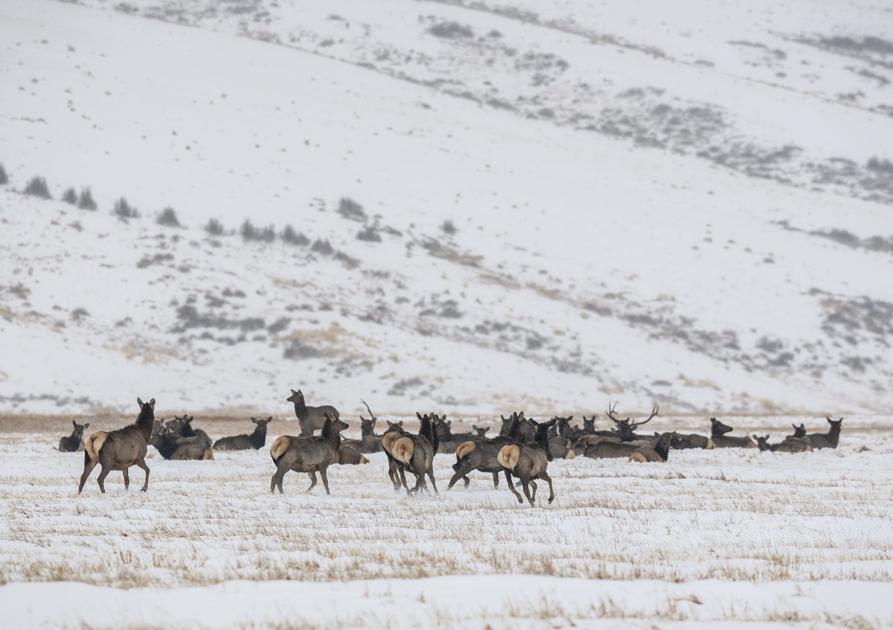
The daily morning feeding of 7,000 or so wapiti on the National Elk Refuge began for the winter on Wednesday, after animals started to get antsy as the grasses they graze on waned.
Biologists use a criteria of 300 pounds of grass and forbs per acre to determine when to begin the supplemental feeding season, a 109-year-old tradition on the federal refuge north of Jackson. While out surveying the forage Monday, biologist Eric Cole estimated 263 pounds of elk eats per acre.
“I was starting to see anecdotal signs that elk were starting to leave the refuge,” Cole said.
Elk were starting to move into the Twin Creek subdivision, he said. A large group was also spotted headed toward the North Gap area, an indication that the animals might have pressed on toward private land south of Grand Teton National Park.
“Those were generally signs that we were timing it right,” Cole said.
The onset of the 2021 feeding season was not influenced by the implementation of a “step-down” plan that is supposed to guide the refuge toward less dependence on supplemental feed. That plan, which is being litigated, is intended to abbreviate the length of the feeding season. Its goal is to reduce fed-elk numbers to 5,000 and reduce the amount of feed distributed by half.
Nevertheless, a relatively skimpy snowpack so far allowed the Jackson Elk Herd to go without supplemental feed for about a week later than usual. On average, feeding begins Jan. 26, though there’s significant variability, and the weather-dependent start date can fall as early as late December and as late as the end of February.
Throughout this first week to 10 days of the feeding season, elk on the U.S. Fish and Wildlife Service-managed property will see a gradual increase in daily rations. Eventually, the large-bodied cervids will receive about 8 pounds of pelleted alfalfa per animal per day.
Cole anticipates that wapiti numbers will increase over the next several weeks, a product of the sight and sound of feeding equipment that attracts the intelligent, long-lived animals.
As they gather daily on feedlines for approximately the next two months, refuge elk will be much more concentrated than they would under natural conditions.
Research recently published shows that elk contact rates increase by 2.6 times on the southern refuge when the animals are fed. Some of those tightly congregated animals could be carrying and spreading lethal, incurable chronic wasting disease, which was found for the first time in the Jackson Herd in December.
The feeding-reduction “step down” plan will come into play when Cole and refuge management make the call to finish feeding for the year.
Tentatively, the feeding season will terminate two weeks earlier than it would have historically, though Cole noted that the seasonal wean will also depend on conditions and elk behavior.
"feed" - Google News
February 05, 2021 at 09:30AM
https://ift.tt/2YLNmcO
National Elk Refuge feed trucks rumble on | Local | jhnewsandguide.com - Jackson Hole News&Guide
"feed" - Google News
https://ift.tt/2z3xEQN
https://ift.tt/2yko4c8
Bagikan Berita Ini














0 Response to "National Elk Refuge feed trucks rumble on | Local | jhnewsandguide.com - Jackson Hole News&Guide"
Post a Comment